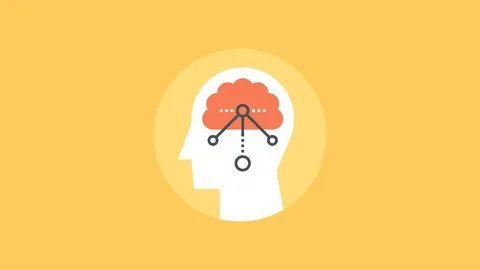
Free Mindfulness Tutorial - Mindfulness and Neuroplasticity 
This free course provides an introduction to the concept of neuroplasticity and how mindfulness techniques can be used to improve mental and physical wellbeing. Learn how to apply these techniques to your life and reap the benefits. ▼
ADVERTISEMENT
Course Feature
![]() Cost:
Cost:
Free
![]() Provider:
Provider:
Udemy
![]() Certificate:
Certificate:
No Information
![]() Language:
Language:
English
![]() Start Date:
Start Date:
Self Paced
Course Overview
❗The content presented here is sourced directly from Udemy platform. For comprehensive course details, including enrollment information, simply click on the 'Go to class' link on our website.
Updated in [March 06th, 2023]
This course provides an introduction to the concept of mindfulness and its relationship to neuroplasticity. Participants will learn about the mindfulness gap, how to cultivate positivity and vulnerability, and how to practice mindfulness. The course will conclude with a wrap-up of the topics discussed. Participants will gain an understanding of the importance of mindfulness and how it can be used to improve mental health and wellbeing.
[Applications]
After completing this course, participants can apply the knowledge they have gained to their daily lives. They can use mindfulness techniques to become more aware of their thoughts and feelings, and to better manage their emotions. Additionally, they can use the principles of neuroplasticity to create new neural pathways and to rewire their brains for greater resilience and wellbeing. Finally, they can use the concepts of positivity and vulnerability to build stronger relationships with others and to foster a greater sense of connection.
[Career Paths]
1. Mental Health Counselor: Mental health counselors help individuals, couples, and families manage and overcome mental and emotional disorders and problems with their relationships. They provide counseling services, assess mental health issues, and develop treatment plans. With the increasing awareness of the importance of mindfulness and neuroplasticity, mental health counselors are increasingly incorporating these concepts into their practice.
2. Mindfulness Coach: Mindfulness coaches help individuals learn and practice mindfulness techniques to improve their mental and emotional wellbeing. They provide guidance and support to help individuals develop a mindfulness practice and use it to manage stress, anxiety, and other mental health issues. As mindfulness and neuroplasticity become more widely accepted, the demand for mindfulness coaches is expected to increase.
3. Neuroplasticity Researcher: Neuroplasticity researchers study the effects of mindfulness and neuroplasticity on the brain and behavior. They conduct research to understand how mindfulness and neuroplasticity can be used to improve mental and emotional wellbeing. With the increasing interest in mindfulness and neuroplasticity, the demand for neuroplasticity researchers is expected to grow.
4. Mindfulness Educator: Mindfulness educators teach individuals about the benefits of mindfulness and how to practice it. They provide instruction on mindfulness techniques and help individuals develop a mindfulness practice. As mindfulness and neuroplasticity become more widely accepted, the demand for mindfulness educators is expected to increase.
[Education Paths]
1. Psychology Degree: A psychology degree is a great way to learn more about mindfulness and neuroplasticity. This degree will provide students with an understanding of the psychological and neurological processes that underlie mindfulness and neuroplasticity. Students will also learn about the various techniques and strategies used to promote mindfulness and neuroplasticity. Additionally, students will gain an understanding of the research and theories related to these topics. As the field of psychology continues to grow, so does the need for professionals with a strong understanding of mindfulness and neuroplasticity.
2. Neuroscience Degree: A neuroscience degree is another great way to learn more about mindfulness and neuroplasticity. This degree will provide students with an understanding of the neurological processes that underlie mindfulness and neuroplasticity. Students will also learn about the various techniques and strategies used to promote mindfulness and neuroplasticity. Additionally, students will gain an understanding of the research and theories related to these topics. As the field of neuroscience continues to grow, so does the need for professionals with a strong understanding of mindfulness and neuroplasticity.
3. Cognitive Science Degree: A cognitive science degree is a great way to learn more about mindfulness and neuroplasticity. This degree will provide students with an understanding of the cognitive processes that underlie mindfulness and neuroplasticity. Students will also learn about the various techniques and strategies used to promote mindfulness and neuroplasticity. Additionally, students will gain an understanding of the research and theories related to these topics. As the field of cognitive science continues to grow, so does the need for professionals with a strong understanding of mindfulness and neuroplasticity.
4. Health Science Degree: A health science degree is another great way to learn more about mindfulness and neuroplasticity. This degree will provide students with an understanding of the physiological processes that underlie mindfulness and neuroplasticity. Students will also learn about the various techniques and strategies used to promote mindfulness and neuroplasticity. Additionally, students will gain an understanding of the research and theories related to these topics. As the field of health science continues to grow, so does the need for professionals with a strong understanding of mindfulness and neuroplasticity.
Pros & Cons

Helpful information

Easy to understand

Deep knowledge

Soothing voice

Good start for beginners

Excellent

Clear and precise

Good course

Monotonous voice

No visuals

Ideas lost quickly
Course Provider

Provider Udemy's Stats at AZClass
This free course introduces the concept of neuroplasticity and how you can use mindfulness techniques to improve your physical and mental health. Learn how to apply these techniques to your life and reap the benefits. This free mindfulness tutorial introduces the practice of mindfulness and its connection to neuroplasticity. Learners will understand the concept of mindfulness, the mindfulness gap, and how neuroplasticity can be used to create positive and vulnerable states of mind. Through practice, learners will be able to apply mindfulness techniques to everyday life and gain a better understanding of how neuroplasticity can be harnessed to create lasting change. This tutorial is suitable for both beginners and those looking to deepen their understanding of mindfulness and neuroplasticity.
Discussion and Reviews
0.0 (Based on 0 reviews)
Explore Similar Online Courses

Leadership for an Increasingly Diverse World

The Django Admin for Web Developers

Python for Informatics: Exploring Information

Social Network Analysis

Introduction to Systematic Review and Meta-Analysis

The Analytics Edge

DCO042 - Python For Informatics

Causal Diagrams: Draw Your Assumptions Before Your Conclusions

Whole genome sequencing of bacterial genomes - tools and applications

Mindfulness: What It Is Where It Comes From and How to Practice It

Free Meditation Tutorial - Mindfulness Meditation: The Science And Practice


Start your review of Free Mindfulness Tutorial - Mindfulness and Neuroplasticity